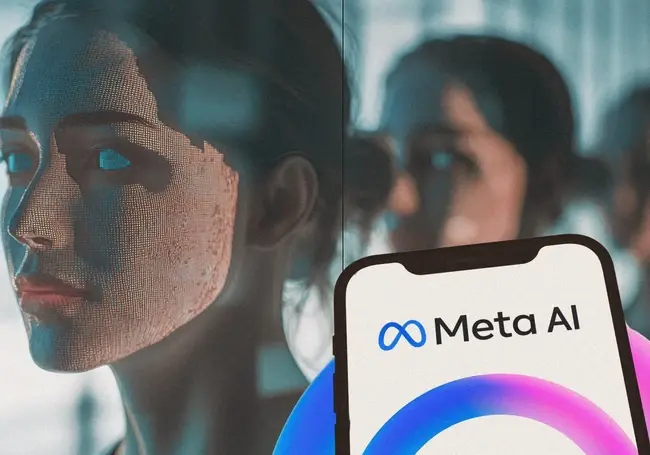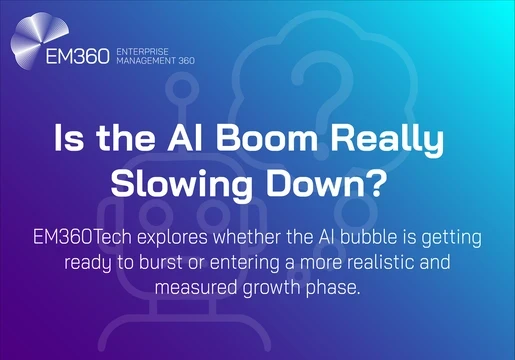In July this year, Ofcom research revealed that 43% of people aged over 16 say they have seen at least one deepfake online in the last six months – rising to 50% among children aged 8-15.
Among adults who say they have seen deepfake content, one in seven (14%) say they have seen a deepfake.
To tackle the spread of video manipulation and spread of deepfakes, Meta has introduced an open-source AI model that embeds watermarks in authenticated videos.
Yesterday [December 12, 2024], Mark Zuckerberg-owned Meta announced the launch of Meta Video Seal, an AI tool designed to deal with deepfakes and misinformation in online media.
Meta Video Seal was born from Meta Fundamental AI Research (FAIR), leveraging its research, coding, and datasets. This new open-source AI model works by watermarking videos that will mark them as verified.
The new tool comes after the success of the Meta Audio Seal released last year, which works by embedding imperceptible watermarks into audio files.
In addition to the launch of Meta Video Seal, the tech giant is also sharing a diverse range of artefacts.
This includes a foundation model for controlling the behaviour of virtual embodied agents, a method for scaling memory layers that will enable more factual information, and code to help models become more socially intelligent.
There are a total of 9 projects in the work at Meta all ready for users to download and use starting December 12, 2024.
Read: Meta to Label AI Images on Facebook and Instagram in Crackdown on ‘Deceptive’ Content
Also Read: Taylor Swift AI Deepfakes Spark Fresh Calls for Regulation on AI

What is the Meta Video Seal?
Meta Video Seal is Meta’s open-source AI model that stamps videos with watermarks as verification, distinguishing them from deepfakes or misinformed video content online.
The AI model’s video watermarking feature addresses challenges related to the proliferation of AI-generated content and sophisticated video editing tools out there today. Such tools can sometimes fail to be efficient or flexible.
Meta is introducing Video Seal to help address these challenges and reduce the spread of misinformation.
Video Seal is a comprehensive framework for neural video watermarking and a competitive open-sourced model, stated Meta.
In a research paper, Meta authors – Pierre Fernandez, Hady Elsahar, Zeki Yalniz, and Alexandre Mourachko stated that their approach jointly trains an embedder and an extractor, while ensuring the watermark robustness by applying transformations in-between, e.g., video codecs.
“This training is multistage and includes image pre-training, hybrid post-training and extractor fine-tuning.”
Read: Trump Uses AI Deepfakes to Fake Taylor Swift Endorsement
Also Read: Meta's Self-Taught Evaluator Takes Humans Out Of AI Evaluation
How Does The Meta Video Seal Work?
The Meta Video Seal embeds watermarks through a technique called temporal watermark propagation. This technique adds watermarks to videos without having to process each frame individually. This way it's faster and more efficient.

The watermarks are designed to be imperceptible to the human eye but detectable by AI systems. The Meta Video Seal watermarks will help to identify deepfakes and other forms of manipulated media.
Meta says that Video Seal achieves higher robustness compared to strong baselines, especially under challenging distortions combining geometric transformations and video compression.
Potential Impact of Meta Video Seal
Meta believes that its new AI model, the Video Seal, a neural video watermarking can mitigate the risks of imitation, manipulation, and other forms of misuse in online video media.
“Post-hoc watermarking is a crucial step towards better traceability for content and AI models,” the tech giant’s official statement reads.
Some advantages of Video Seal are:
1. Tackling Misinformation
Meta Video Seal was designed to tackle the spread of misinformation and deepfakes online. The AI tool embeds watermarks to ensure the video can be distinguished from other manipulated AI-driven video content. The watermarks essentially work as an AI video authenticator.
2. Protecting Intellectual Property
Meta Video Seal can also function as a tool that protects a video creator’s intellectual property rights by embedding the nearly invisible watermark. It can prevent unauthorised actors from using the creators’ content without permission.
3. Building Digital Trust
Meta Video Seal can help restore trust in online media, which has been destroyed by the rapid spread of misinformation and deepfakes. The new AI product provides a way to authenticate videos and present these verified videos to the online community.
The Future of Video Seal: What's Next?
Meta's future work on the Video Seal will likely focus on improving visual consistency across watermarked frames. Its plans ensure that watermarks are embedded in a domain better suited for video compressions such as YUV or YCbCr.
The tech giant will work on increasing the payload and further enhancing the strengths of the watermarks. In addition to improving watermark quality, Meta is also exploring the security of the framework.
Also Read: Machine Learning Model Can Now Spot Real-Time Fake News







Comments ( 0 )